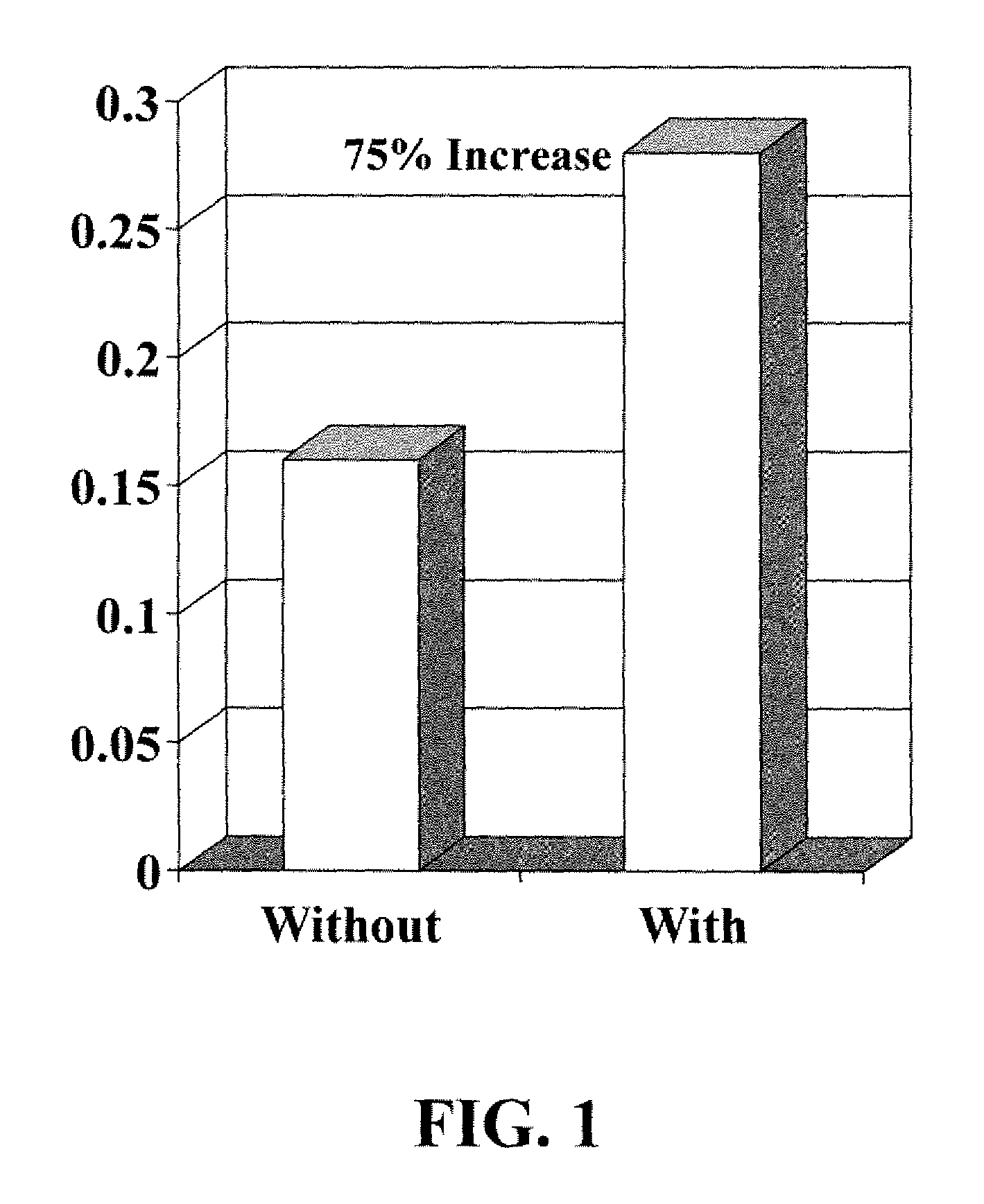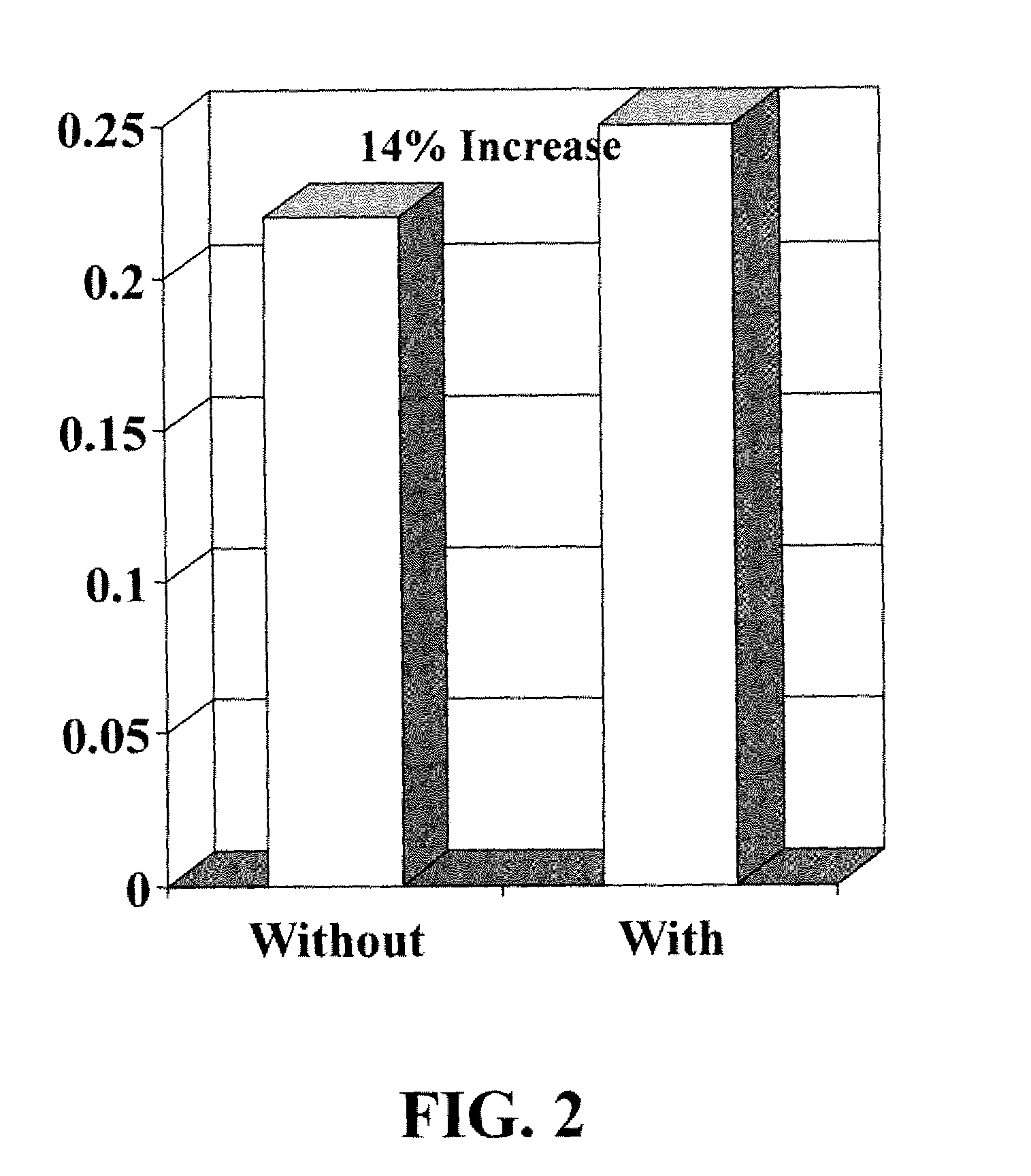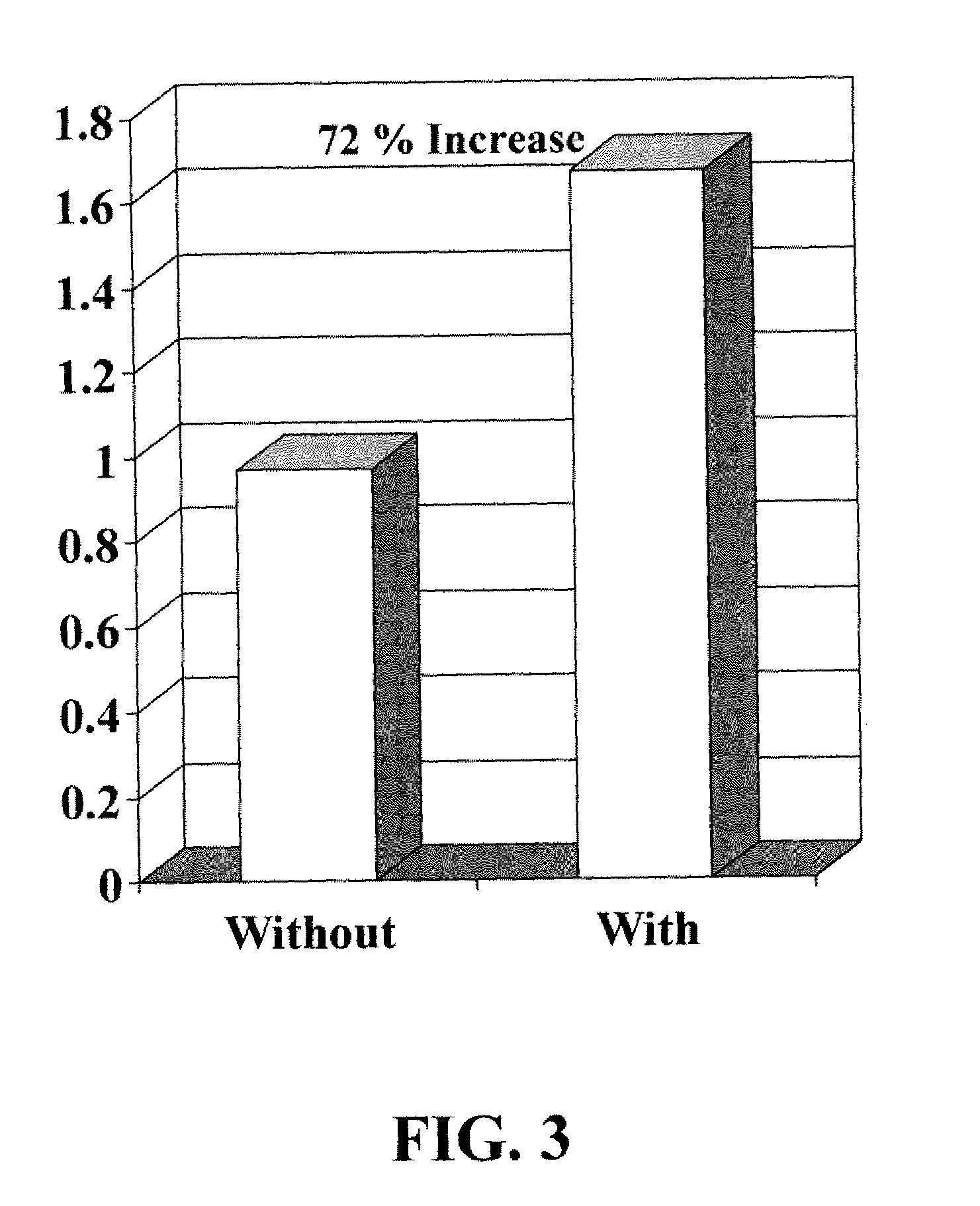Compositions for attracting stink bugs
a technology of stink bugs and compositions, applied in the field of compositions for attracting stink bugs, can solve the problems of reluctance to use any pesticide on agricultural products, deregistration of many pesticides, and toxic to humans
- Summary
- Abstract
- Description
- Claims
- Application Information
AI Technical Summary
Benefits of technology
Problems solved by technology
Method used
Image
Examples
example 1
Euschistus Tristigmus Response to a Pheromone Synergist
[0045]An experiment was carried out near Starkville, Oktibbeha County in Mississippi to study the response of Euschistus tristigmus in a crop field to a pheromone synergist. The crop field was a soybean field bordered on two sides by woods. Geraniol was used as a synergist with methyl (2E,4Z)-decadienoate, a pheromone for Euschistus tristigmus. Tedders traps were used in the experiment. Each trap was baited with 160 mg geraniol and 200 mg methyl (2E,4Z)-decadienoate and each control trap was baited with 200 mg methyl (2E,4Z)-decadienoate. The control trap contained no geraniol or other synergists. The trapped adult insects of Euschistus tristigmus were collected on a daily basis and the total number of trapped insects was counted. Statistical analysis was done using the Least Squares means separation from the SAS GLM procedure.
[0046]FIG. 1 illustrates the average number of bugs trapped per day. As illustrated in FIG. 1, there wa...
example 2
Euschistus Servus Response to a Pheromone Synergist
[0048]An experiment was carried out near Starkville, Oktibbeha County in Mississippi to study the response of Euschistus servus to a pheromone synergist. Geraniol was used as a synergist with methyl (2E,4Z)-decadienoate, a pheromone for Euschistus servus. Tedders traps were used in the experiment. Each treatment trap was baited with 160 mg geraniol and 200 mg methyl (2E,4Z)-decadienoate and each control trap was baited with 200 mg methyl (2E,4Z)-decadienoate. The control trap contained no geraniol or any other synergist. The trapped adult insects of Euschistus servos were collected on a daily basis and their total numbers were counted. Statistical analysis was done using the Least Squares means separation from the SAS GLM procedure.
[0049]FIG. 2 illustrates the average number of bugs trapped per day in soybean field. As illustrated in FIG. 2, there was about a 14% increase in the number of captured bugs when geraniol was used as a sy...
example 3
Euschistus Species Response to a Pheromone Synergist
[0055]An experiment was carried out in Monticello, Ark. to study the response of Euschistus species in a soybean field to a pheromone synergist. Geraniol was used as a synergist to methyl (2E,4Z)-decadienoate, which is a pheromone for both Euschistus species. Tedders traps were used in the experiment. Each treatment trap was baited with 160 mg geraniol and 200 mg methyl (2E,4Z)-decadienoate and each control trap was baited with 200 mg methyl (2E,4Z)-decadienoate. The control traps contained no geraniol or any other synergist. The trapped adult insects of Euschistus species were collected on a daily basis and their total numbers were counted. Statistical analysis was done using the Least Squares means separation from the SAS GLM procedure.
[0056]FIG. 7 illustrates the average number of bugs trapped per day. As illustrated in FIG. 7, there was about a 269% increase in the number of captured bugs when geraniol was used as a synergist. ...
PUM
 Login to View More
Login to View More Abstract
Description
Claims
Application Information
 Login to View More
Login to View More - R&D
- Intellectual Property
- Life Sciences
- Materials
- Tech Scout
- Unparalleled Data Quality
- Higher Quality Content
- 60% Fewer Hallucinations
Browse by: Latest US Patents, China's latest patents, Technical Efficacy Thesaurus, Application Domain, Technology Topic, Popular Technical Reports.
© 2025 PatSnap. All rights reserved.Legal|Privacy policy|Modern Slavery Act Transparency Statement|Sitemap|About US| Contact US: help@patsnap.com



